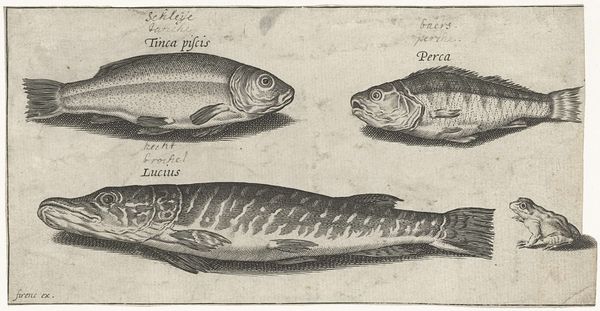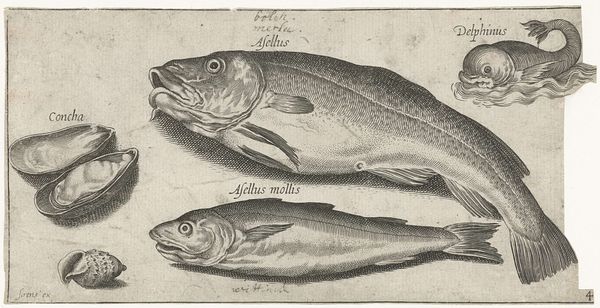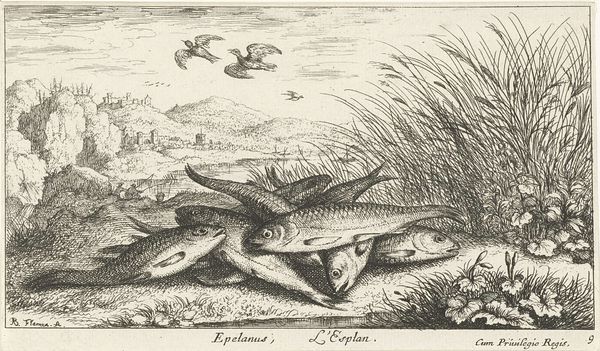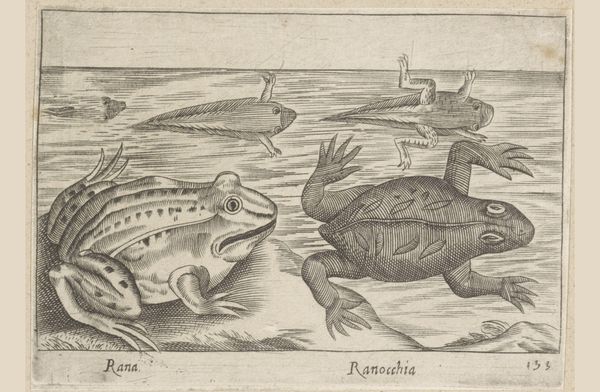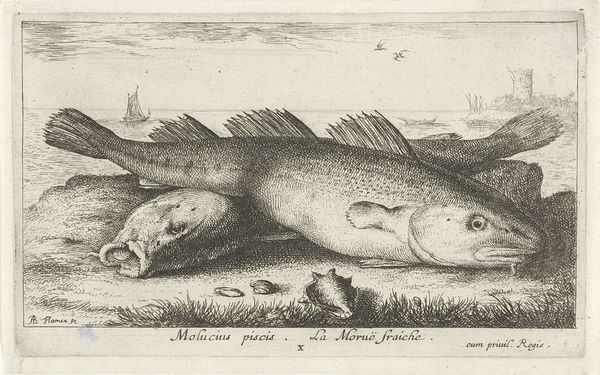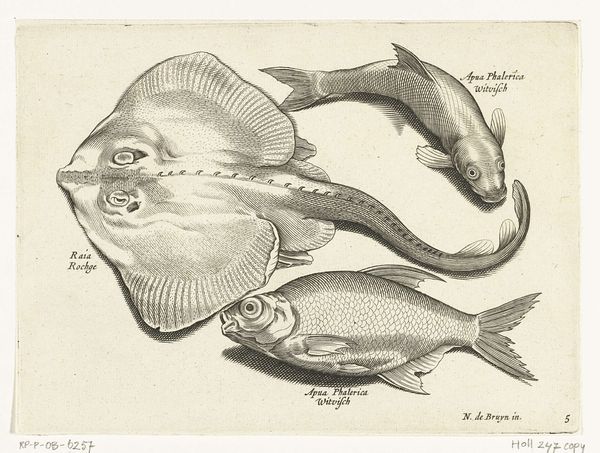
print, engraving
#
dutch-golden-age
# print
#
old engraving style
#
engraving
#
realism
Dimensions: height 92 mm, width 185 mm
Copyright: Rijks Museum: Open Domain
Curator: What we have here is an engraving from the Dutch Golden Age by Pierre Firens titled “Drie karpers”, which translates to "Three Carps" in English, dating from somewhere between 1600 and 1638. Editor: My initial reaction is surprise at how scientific it feels, despite being a work of art. The way the fish are arranged and the detail given to each one really speaks to an intent of observation. Curator: Indeed. During this era, the Dutch were intensely interested in the natural world, and art often served a purpose beyond aesthetics. This print, for instance, would have been a part of larger encyclopedic projects. Think about the burgeoning field of natural history and how these images could circulate knowledge about different species. Editor: I can see that, especially with the word “Carpio” next to each fish acting as labels. I am also curious about the decision to render this work through the method of engraving; what implications does it have in its reading and reception? Curator: Well, the clean lines and tonal precision achievable with engraving perfectly suited the objective of accurate visual documentation. Engravings were also easily reproducible, aiding the broader distribution of knowledge and aligning it to the Enlightenment and the value placed in rational thought. It could also highlight colonial dynamics if these natural specimens came from territories under Dutch influence. Editor: That colonial connection is very poignant to consider. These serene images can be deceptive; there is so much more beneath the surface concerning human exploitation and claiming of power. Even the absence of a habitat background becomes a pointed choice, framing the fishes as specimens. Curator: Exactly! And viewed in the present day, that clinical style also invites reflection on the ecological impact of our society and the importance of representing—and preserving—the creatures that surround us. Editor: It’s interesting to me that an artwork so focused on observation also serves as a window into society’s complex and often unsettling relationship with nature and scientific progress. Curator: A fine balance, which is one reason why this relatively simple piece is able to give us so much to think about, even centuries later.
Comments
No comments
Be the first to comment and join the conversation on the ultimate creative platform.




